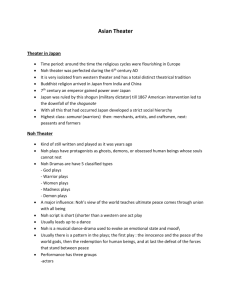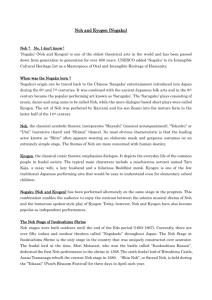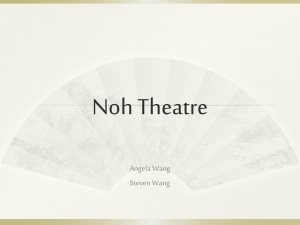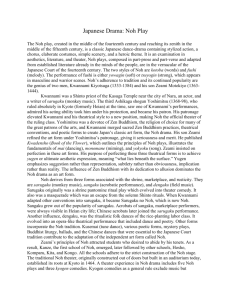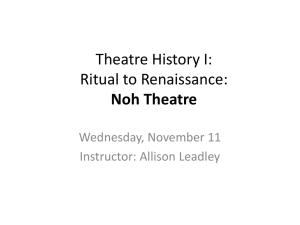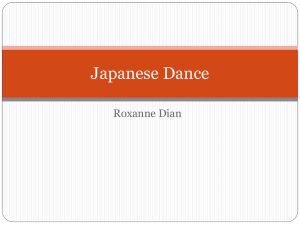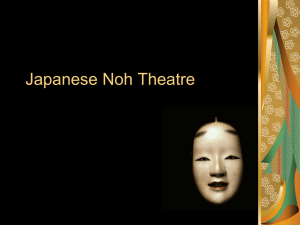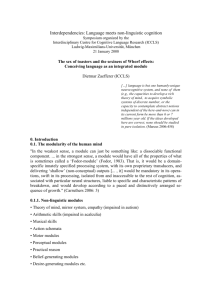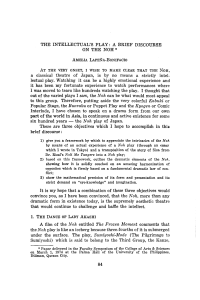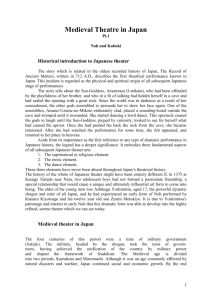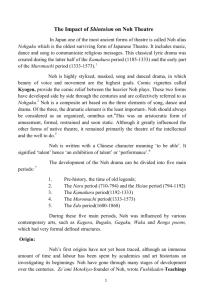Noh-play and Japanese religious culture from the view point of `art
advertisement
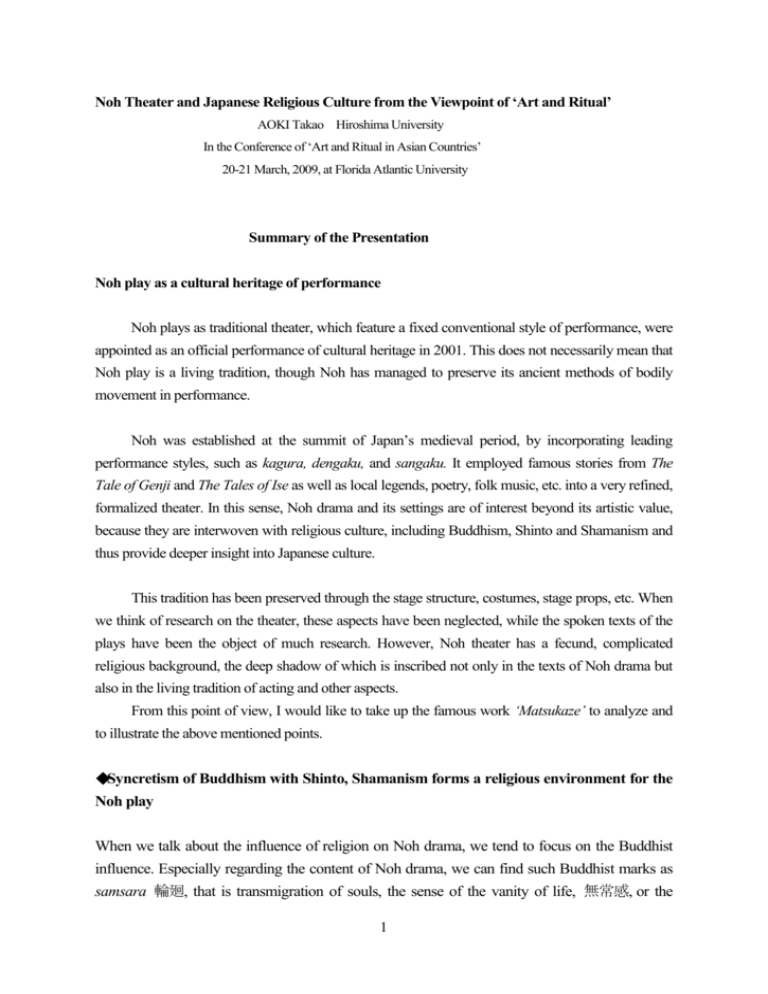
Noh Theater and Japanese Religious Culture from the Viewpoint of ‘Art and Ritual’ AOKI Takao Hiroshima University In the Conference of ‘Art and Ritual in Asian Countries’ 20-21 March, 2009, at Florida Atlantic University Summary of the Presentation Noh play as a cultural heritage of performance Noh plays as traditional theater, which feature a fixed conventional style of performance, were appointed as an official performance of cultural heritage in 2001. This does not necessarily mean that Noh play is a living tradition, though Noh has managed to preserve its ancient methods of bodily movement in performance. Noh was established at the summit of Japan’s medieval period, by incorporating leading performance styles, such as kagura, dengaku, and sangaku. It employed famous stories from The Tale of Genji and The Tales of Ise as well as local legends, poetry, folk music, etc. into a very refined, formalized theater. In this sense, Noh drama and its settings are of interest beyond its artistic value, because they are interwoven with religious culture, including Buddhism, Shinto and Shamanism and thus provide deeper insight into Japanese culture. This tradition has been preserved through the stage structure, costumes, stage props, etc. When we think of research on the theater, these aspects have been neglected, while the spoken texts of the plays have been the object of much research. However, Noh theater has a fecund, complicated religious background, the deep shadow of which is inscribed not only in the texts of Noh drama but also in the living tradition of acting and other aspects. From this point of view, I would like to take up the famous work ‘Matsukaze’ to analyze and to illustrate the above mentioned points. ◆Syncretism of Buddhism with Shinto, Shamanism forms a religious environment for the Noh play When we talk about the influence of religion on Noh drama, we tend to focus on the Buddhist influence. Especially regarding the content of Noh drama, we can find such Buddhist marks as samsara 輪廻, that is transmigration of souls, the sense of the vanity of life, 無常感, or the 1 yearning for nirvana, 成仏, through the liberation from desire or passion in this world. In addition, in medieval days, Zen Buddhism contributed greatly to the birth of Japanese culture, including influences on the tea ceremony, ink painting, and stone gardens. Thus in the secret treaties about Noh Plays which Zeami wrote, we can recognize the deep influence of Zen Buddhism. However, we can find many marks of Shintoism or rather natural religion and shamanism. In other words, we can elucidate the shadow of the natural religion of Shinto and shamanism by analyzing the Noh stage, for example, the pine tree painted on the stage backdrop, various stage props, and the wearing of clothes as a keepsake to cause ghostly possession etc… These aspects of the performance go beyond the analysis of the texts of plays. ◆Development of the theater structure of Noh drama and Analysis of its tacit meaning The Noh stage has its origins in the style of the Kagura ritual cult, which represents a prototype of Japanese festival or ritual performance. An analysis of the Noh stage hut or Noh theater will make clear its hidden relationship between animism and Noh performance. For example, the pine tree stage prop plays a very important role in this drama, not only as an aspect of the written literary drama, but also in regard to the acting of a play. The pine tree as a stage prop illustrates an essence of natural religion where spirits or ghosts will rest. An analysis of The Old Pine Tree painted on the stage’s backdrop will also show an essential feature of the natural religion of Shinto. The Tree is a seat for the god of the area. In front of this divinely inhabited pine tree, the Noh theater will be acted. The true spectator of the Noh theater is the god to whom the Noh performance will be offered. We can find the prototype of this stage structure and its meaning in the Kagura ritual and, even further back, in the Myth of the Secret Sun Goddess. ◆To fulfill the purpose, we are going to look at the famous play Matsukaze to illustrate the above mentioned points. 2


